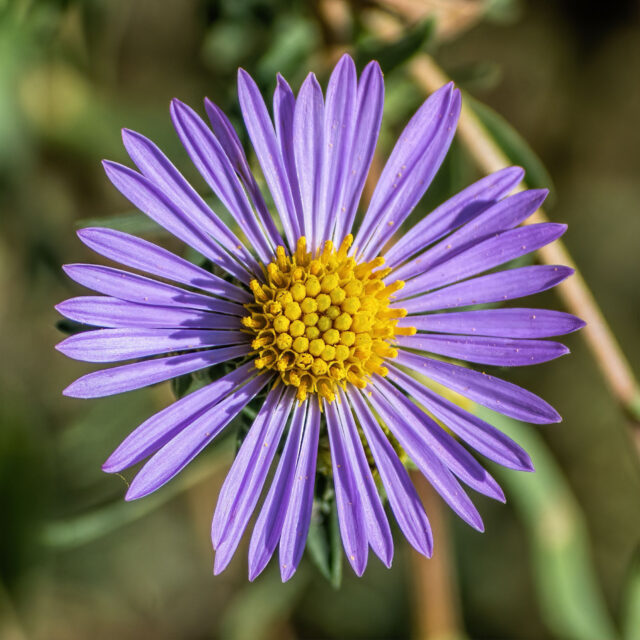
The garden is essentially done for the year, though there will be color until the first hard freeze. Here’s a look back at this year’s experiments.
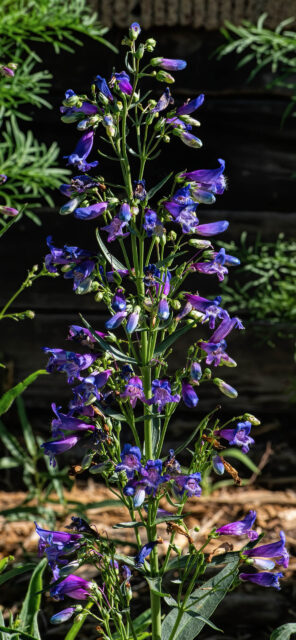
I focused on prairie natives and penstemons this year. Many Penstemon species are found in hot, arid regions out west, and I figured that they might do well Kansas. It’s a good genus for blue flowers, too. I started three species from seed, P. digitalis, P. grandiflorus and P. barbatus “Twizzle Blue.” I also ordered a plant of P. heterophyllus “Electric Blue.” P. grandiflorus formed glaucous rosettes but didn’t bloom. One of the six P. digitalis seedlings sent up flowering stems, and both blue varieties bloomed well. They sometimes looked a bit limp during extended dry spells, but otherwise they all tolerated 100°+ temperatures with aplomb. If they survive the winter (and they ought to), they should all put on fine show in May and June. I’ll probably try more penstemons next year. For more information about penstemons, browse the American Penstemon Society’s rather disorganized website when it’s working.
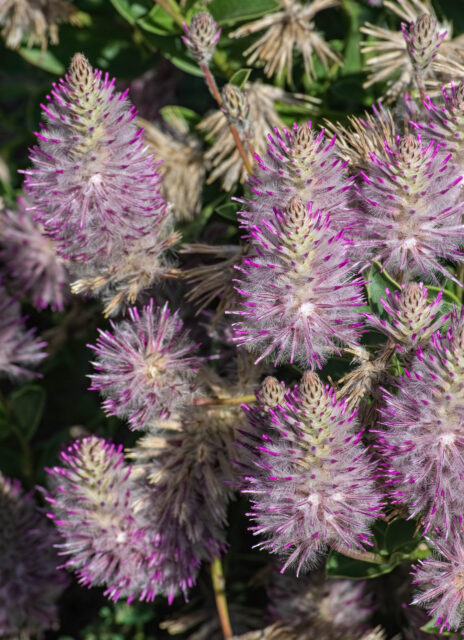
The six seeds in the packet of Ptilotus exaltatus “Joey” turned into nine plants; Jimi might be interested to know that sometimes six really is nine. This Australian relative of Celosia didn’t mind the blistering summer temperatures in the slightest. It forms a compact mound about a foot tall, covered from midsummer on with pink and grey flower spikes. They look fuzzy but feel like rubber. I sheared a few plants back when some started to look ratty, which resulted in a second flush of bloom. I might grow these again.
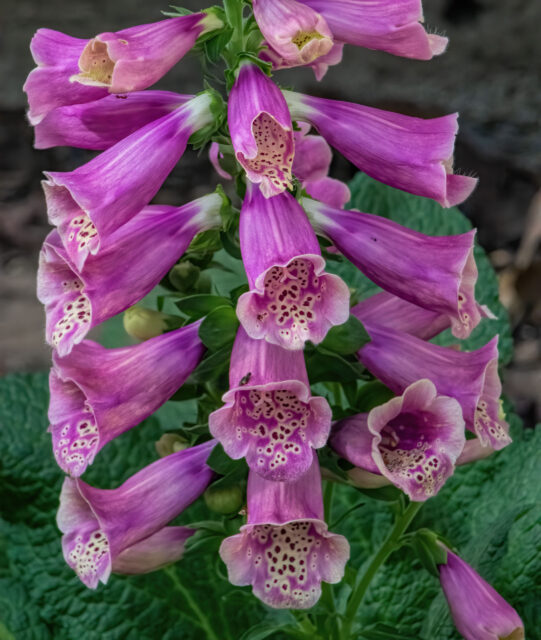
All of the “Camelot Mix” foxgloves flowered, though some took their time getting started, and they are still blooming. About half of them are lavender; if there were equal amounts of each color in the seed mixture, then lavender germinates better significantly better than the others. I planted these in shady spots, but even so some needed extra water during the hottest days. The foxgloves should return next year and put on an even better show.
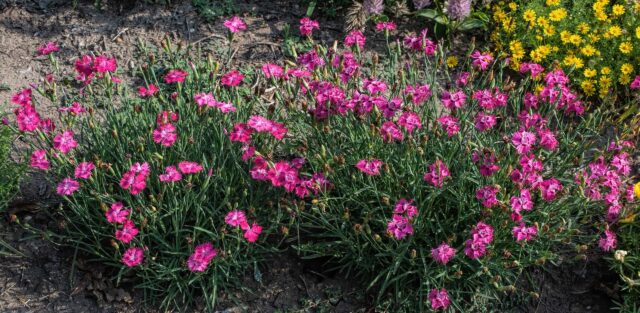
Dianthus gratianopolitanus, the “cottage pink,” has been blooming steadily since early summer. It tolerates heat well. The plants are surprisingly variable. While most plants are compact mats of narrow grey-green leaves, some are taller and looser in form, and the flowers cover a wide range of pink. I wonder if the seed plants were properly isolated from other Dianthus.
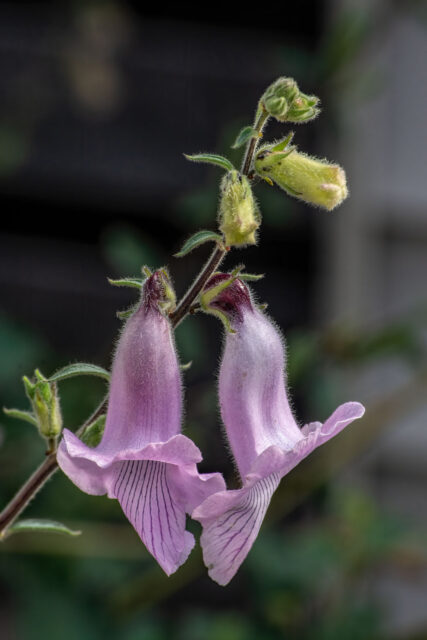
A friend gave me some seeds of Ceratotheca triloba, the “South African foxglove.” Aside from the tubular flower, it isn’t much like a true foxglove. It’s a fast-growing annual that like heat and sun. It began blooming when it was about a yard tall. It’s now taller than I am and still flowering freely. Bumblebees like it. It’s a good plant for the back of a sunny garden. The leaves stink when touched, so you probably don’t want to plant it where people are likely to brush it when they walk by.
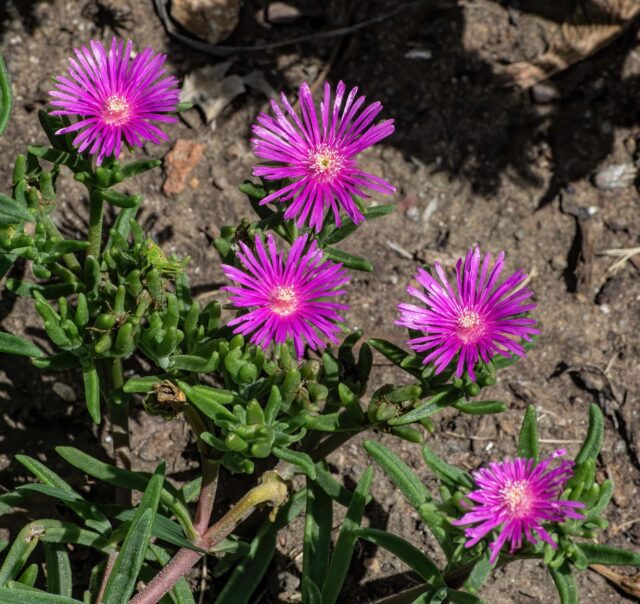
The various Delospermas are all low, spreading mats of succulent leaves with shiny magenta, pink or white daisy-like flowers. If they survive the winter, they’ll be useful as ground covers and edging.

Helianthus mollis, the “ashy sunflower,” reached five feet and bloomed well in its first year during July and August. It’s supposed to be an aggressive colonialist, so I’ll be watching it closely during the next few years.
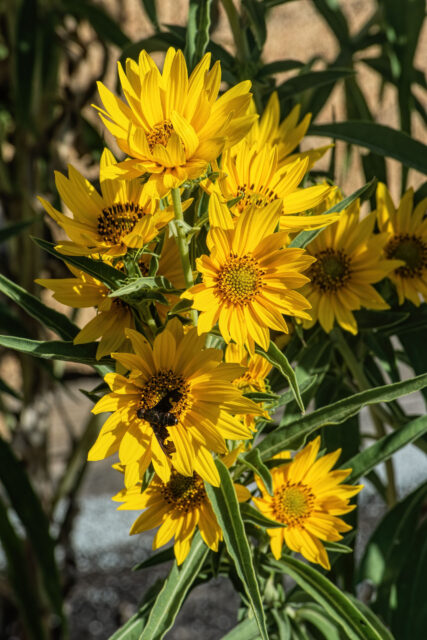
Helianthus maximiliani is nose-height and will probably be taller than I am next year. It’s blooming profusely right now.
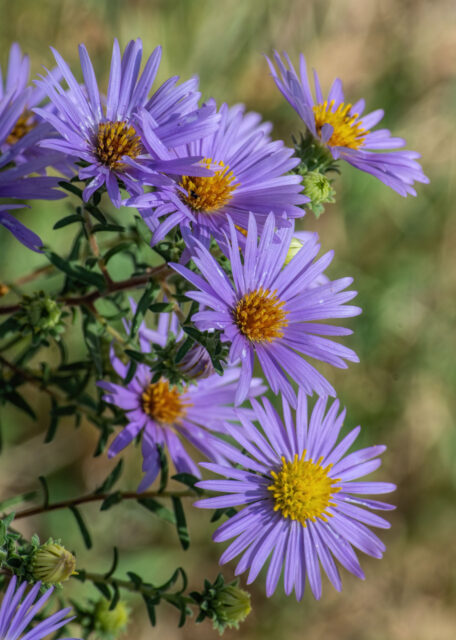
Symphyotrichum (formerly Aster) oblongifolium is a another late bloomer, just now coming into its prime. The plants tend to sprawl; it’s probably best to pinch the tips a few times early in the year to induce bushiness.
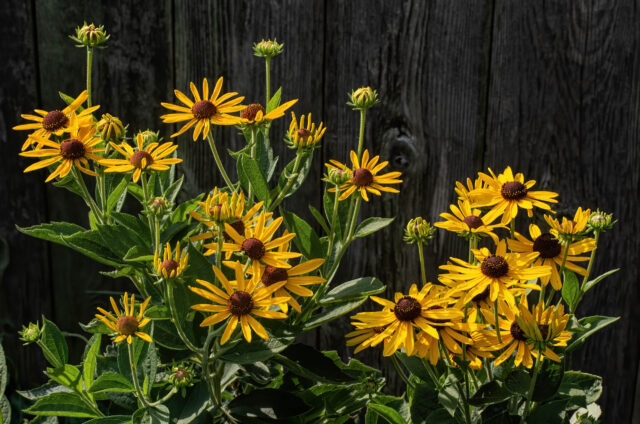
Rudbeckia subtomentosa bloomed profusely in August and September. It grows quickly from seed and can be treated as an annual, though it supposed to be one of the more reliably perennial black-eyed susans. The only problem is that caterpillars of the silvery checkerspot butterfly will defoliate the plants unless you are vigilant.
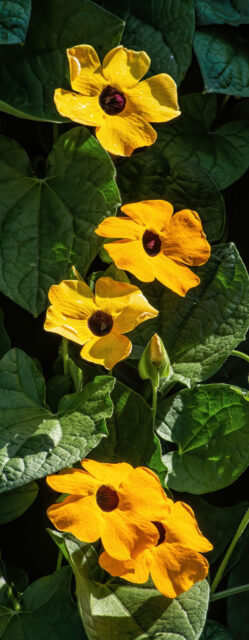
The black-eyed susan vine, Thunbergia alata, grows rapidly and will thickly cover everything nearby. Keep shears handy if you plant it.
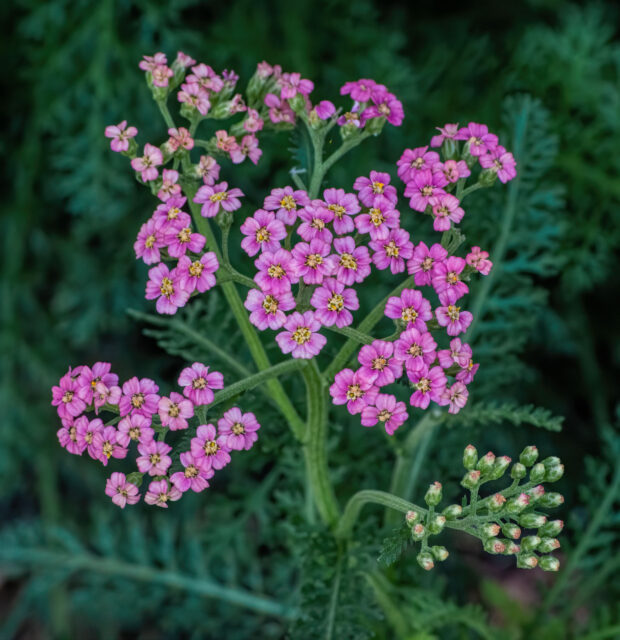
Achillea millefolium “Summer Berries” is supposed to bloom four months from seed. Nope. Out of a dozen plants, only one bloomed, and it took almost seven months. If they do flower next year, they will be useful plants for the difficult areas of the yard.

A couple of the Liatris aspera seedlings bloomed. They flower later than the more commonly grown Liatris varieties, and they should be able to take drier conditions than most in the genus.
Most of the other perennials I started this year — Baptisia australis, Monarda bradburiana, Silphium laciniatum, Thermopsis caroliniana, Asclepias speciosa and a few others — should bloom next year, though a few may take longer. Most of the prairie native seeds are from Prairie Moon Nursery. I also ordered a few plants from High Country Gardens. Both outfits can be recommended if my experience is representative.
There were some surprising disappointments. French marigolds and allegedly exceptionally heat-tolerant zinnas did poorly in the heat, and Cosmos bipinnatus grew large but barely bloomed. I won’t bother with them in the future. Salvia transsylvanica grew well, but grasshoppers ate all the flowers. Perhaps next year they’ll bloom earlier and supply some more blue.
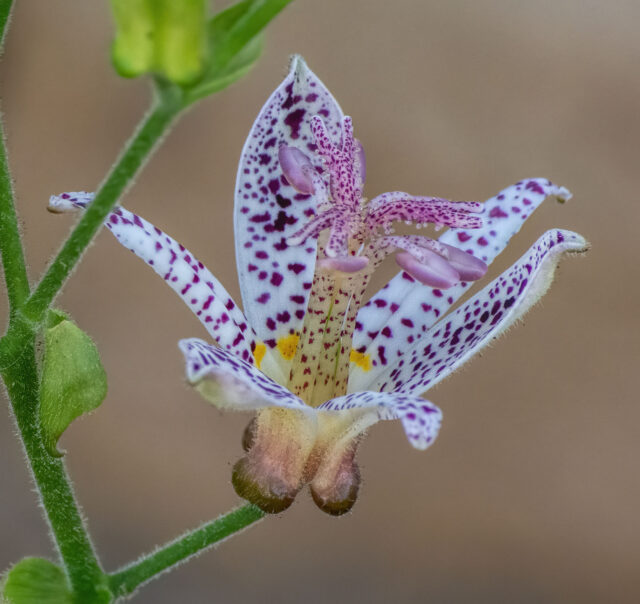
Some of the cheap, pathetic-quality perennials from WalMart that I planted last year finally did something this year, such as the Tricyrtis above and the Eryngium below.
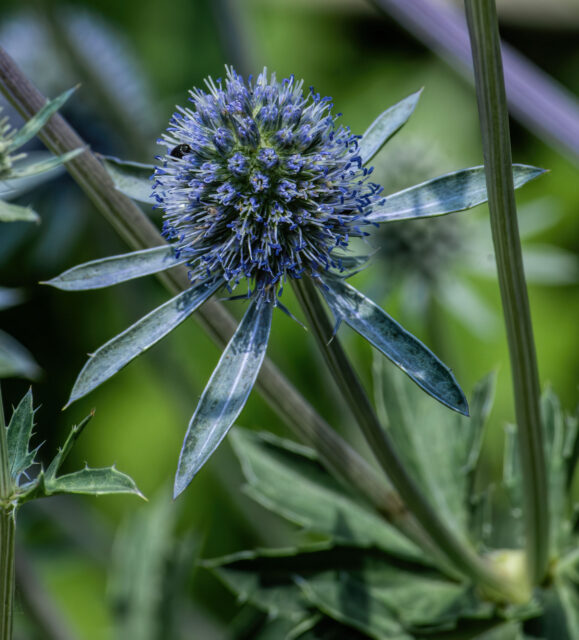

“Symphyotrichum (formerly Aster)”
Has Aster been disappeared as wrong-think?
I am surprised at your marigold and zinnia results, as I’d always thought them heat-proof.
The genus Aster used to be enormous, but those pesky taxonomists couldn’t leave well enough alone. They split off the North American species into a variety of other genera, giving them all awkward, ugly names. The ex-asters remain in the same subfamily and tribe of the
CompositaeAsteraceae as the currently “true” asters.Marigolds and zinnias have done well for me in the past. It’s possible that the seeds I planted this year were not what they were advertised as. According to the Outsidepride.com seed packet, the “Zinnia haageana Aztec Sunset” grows six inches tall and won a “Flameproof” award from the Dallas Arboretum. My plants grew over a foot tall and were the first to wilt when the weather got hot. Seeds from other sources might have done better. I’ve had problems with other seeds from Outsidepride (the “pride” in the name should have made me wary) and I doubt that I’ll do business with them in the future.